
Creating a Pet-Friendly Garden: Tips for a Safe and Beautiful Outdoor Oasis
Are you eager to transform your outdoor space into a lush, vibrant haven for your pets and your favorite plants? Well, you've come to the right place!
In this blog, we'll explore how you can create a pet-friendly and toxin-free garden environment. We've got tips, tricks, and insights to help you cultivate a safe and thriving garden that is perfect for pets and people alike.
Superfood + Nutrient Enhancer (OUTDOOR) promotes vigorous growth and vitality in your outdoor plants. It is designed to help with nutrient deficiency and provide access to potent micronutrients for optimal plant health. Supports flowering and abundant blooms. Easy-to-use formula for all outdoor plants.
What are the benefits of gardening with pets?
Gardening with pets can bring a lot of joy and benefits to both you and your animals. Here are some reasons why it's great to have them around while you're tending to your garden:
- Companionship: Having your pets around while you garden can make the experience more enjoyable. They can keep you company and provide comfort as you work.
- Exercise: Pets, especially dogs, love to explore outdoor spaces. They can stretch their legs, run around, and exercise while accompanying you in the garden. This is good for their health and yours, too, as you might find yourself moving around more while you keep an eye on them.
- Bonding Time: Gardening with your pets can be a bonding experience. You're spending quality time together in a shared activity, which can strengthen the bond between you and your pet.
- Teaching Moments: Gardening offers many teaching opportunities for pets. They can learn about different plants, how they grow, and even how to behave around them. It's a chance for you to train them on acceptable behavior in the garden.
- Stress Relief: Being in nature and working with plants calms many people, and pets can feel the same way. Your pets can benefit from the peaceful environment of the garden, which can help reduce their stress levels.
- Learning Responsibility: If you have children, gardening with pets can teach them responsibility. They learn to care for both the garden and the animals, understanding the needs of living things and the effort it takes to keep them healthy.
- Pest Control: Some pets, like cats, can help control pests in the garden. They may chase away rodents or birds that could damage your plants. Just ensure they don't go overboard and start digging where they shouldn't!
- Entertainment: Pets can be amusing to watch as they explore the garden. Whether it's a cat chasing butterflies or a dog sniffing around the flowers, their antics can bring a smile to your face and make gardening more entertaining.
- Emotional Support: Gardening with pets can provide emotional support, especially during difficult times. The presence of a loyal pet can offer comfort and companionship when you need it most.
- Health Benefits: Spending time outdoors in the garden with your pets can positively affect your health. It promotes physical activity, reduces stress, and boosts mood, contributing to overall well-being for both you and your pets.

Identifying common garden hazards for pets
When you have pets and a garden, you must be aware of potential hazards that could harm them.
Here are some common garden hazards for pets:
- Toxic Plants: Some plants commonly found in gardens can be toxic to pets if ingested. Examples include lilies, azaleas, tulips, and daffodils. These plants can cause symptoms ranging from mild gastrointestinal upset to more severe reactions, depending on the plant and the amount ingested.
- Fertilizers and Pesticides: Many garden fertilizers and pesticides contain chemicals that can harm pets if ingested or come into contact with their skin. Symptoms of poisoning can include vomiting, diarrhea, drooling, and even seizures in severe cases.
- Sharp Objects: Garden tools like rakes, shovels, and trowels can pose a danger to pets if left lying around. If stepped on or played with, sharp edges can cause cuts or puncture wounds, leading to pain and potential infection.
- Insect Stings and Bites: Bees, wasps, and other insects can be present in gardens and may sting or bite curious pets. Insect stings can cause pain, swelling, and allergic reactions in some animals. Certain insects, like spiders, may also be venomous and pose a more severe threat.
- Sharp Plants: Some plants have thorns, spines, or prickly leaves that can injure pets if they come into contact with them. Examples include rose bushes, cacti, and thorny shrubs. These sharp plants can cause cuts, puncture wounds, and irritation to the skin or mouth.
- Mulch and Compost: Certain types of mulch and compost can contain toxic substances to pets if ingested. For example, cocoa mulch contains theobromine, the same compound found in chocolate that is toxic to dogs and cats. Ingesting large amounts of mulch or compost can cause gastrointestinal upset and other symptoms.
- Standing Water: Ponds, birdbaths, and other sources of standing water in the garden can pose a drowning risk for pets, especially small animals like puppies or kittens. Pets may be attracted to water for drinking or playing but can accidentally fall in and struggle to get out.
- Fences and Gates: Inadequately secured fences or gates can allow pets to escape from the garden and potentially get lost or injured. It's essential to regularly check and maintain fencing to prevent escape attempts.
- Garden Decorations: Decorative items like statues, ornaments, and garden gnomes may seem harmless, but they can pose a risk to pets if knocked over or chewed on. Sharp edges or small pieces can cause injuries if swallowed or stepped on.
- Heat and Sun Exposure: Gardens can become hot during the summer months, and pets may be at risk of heatstroke if they spend too much time outdoors without access to shade and water. It's vital to provide shaded areas where pets can cool off and to avoid leaving them outside for extended periods during hot weather.
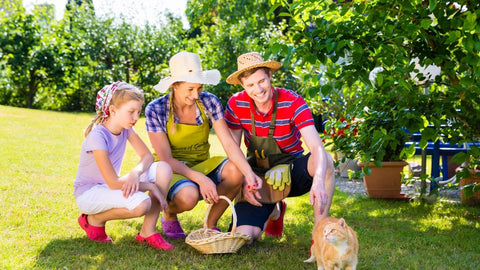
How can you create a pet-friendly garden environment?
Creating a pet-friendly garden environment involves designing your outdoor space in a safe, enjoyable, and stimulating way for your pets.
Here are some tips to help you achieve this:
1. Choose Pet-Safe Plants: To avoid accidental poisoning, select plants that are non-toxic to pets. Look for lists of pet-safe plants from reputable sources or consult your veterinarian for recommendations. Some examples of pet-friendly plants include marigolds, sunflowers, and pet grass.
2. Create Designated Play Areas: Designate specific areas of your garden where pets are encouraged to play and explore. Use durable materials for pathways and play areas, such as gravel or paving stones, to withstand pet traffic and reduce the risk of muddy paws.
3. Provide Shade and Shelter: Incorporate shaded areas into your garden where pets can escape the sun and relax comfortably. Plant trees or install shade sails, pergolas, or garden umbrellas to create shady spots for your pets to rest.
4. Install Secure Fencing: Ensure your garden is securely fenced to prevent pets from escaping and keep out unwanted visitors, such as stray animals or wildlife. Check for gaps or weak spots in the fencing and repair them promptly to maintain a safe enclosure for your pets.
5. Avoid Toxic Substances: Avoid using toxic chemicals, such as fertilizers, pesticides, and herbicides, in your garden. Opt for pet-safe alternatives or natural pest control methods to protect your pets from exposure to harmful substances.
6. Provide Fresh Water: Keep fresh, clean water available for your pets at all times, especially during hot weather. Consider installing a pet-friendly fountain or water feature where pets can drink and cool off.
7. Create Digging Zones: If you have dogs that love to dig, designate a specific area of your garden where digging is allowed. Fill this area with loose soil or sand and encourage your pets to dig by burying toys or treats.

8. Avoid Sharp Objects: Remove or securely store sharp garden tools, decorative objects, and other hazards that could injure your pets. Check for thorns, spines, or prickly leaves on plants, and avoid planting them in areas where pets have access.
9. Add Stimulating Features: Incorporate features into your garden that provide mental and physical stimulation for your pets, such as tunnels, agility equipment, or interactive toys. These features can help keep your pets entertained and engaged outdoors.
10. Supervise and Train: Always supervise your pets in the garden to ensure their safety and well-being. Train them to follow basic commands, such as "stay" or "leave it," to prevent them from getting into dangerous situations or damaging plants.
11. Include Safe Chew Toys: Dogs, in particular, may be inclined to chew on plants or other objects in the garden. Provide safe chew toys or bones to redirect their chewing behavior away from plants and prevent them from ingesting harmful materials.
12. Use Raised Beds or Containers: If you're concerned about pets digging up your plants or damaging root systems, consider planting in raised beds or containers. This helps protect your plants and makes it easier to control the soil composition and moisture levels.
13. Create a Pet-Friendly Pathway: Install a pet-friendly pathway made of materials like mulch, gravel, or rubber pavers that are gentle on pets' paws. Avoid using sharp stones or broken glass that could cause injury or discomfort.
14. Provide Hiding Places: Some pets, especially smaller animals like rabbits or guinea pigs, may feel safer if they have hiding places in the garden. Incorporate shrubs, bushes, or small structures like garden tunnels or hideaways where pets can retreat when stressed or anxious.
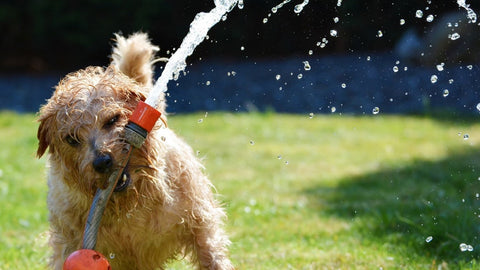
The Best Tips for a Toxic-Free Garden
Maintaining a toxic-free garden involves being mindful of the products and practices you use to care for your plants and outdoor space.
The following are some tips to help you create and maintain a garden that is safe for pets, wildlife, and the environment:
1. Choose Natural Pest Control Methods: Instead of relying on chemical pesticides and herbicides, opt for natural pest control methods to manage pests in your garden. This can include introducing beneficial insects like ladybugs or lacewings, using insecticidal soaps or neem oil, and practicing companion planting to deter pests naturally.
Natural Plant Protection promotes natural pest control and protects against damage from pests, such as spiders, insects, and bugs. It's useful as a protective barrier and supports healthy plant growth. Easy to use for indoor and outdoor plants.
2. Avoid Synthetic Fertilizers: Synthetic fertilizers often contain harmful chemicals that can leach into the soil and waterways, posing risks to pets and wildlife. Instead, use organic fertilizers, compost, and mulch to nourish your plants and improve soil health safely and sustainably.
3. Research Pet-Safe Plants: Before adding new plants to your garden, research whether they are safe for pets. Some common garden plants can be toxic to dogs, cats, and other animals if ingested. Choose pet-safe plants that are non-toxic and won't pose a risk to your pets if they nibble on them.
4. Keep Chemicals Securely Stored: If you use chemical products in your garden, such as fertilizers, pesticides, or herbicides, ensure that they are securely stored in sealed containers out of reach of pets and children. Store them in a locked cabinet or shed to prevent accidental exposure or ingestion.
5. Read Labels Carefully: When purchasing gardening products, read the labels carefully to understand their ingredients and potential risks. Look for products that are labeled as pet-safe or organic, and avoid those containing toxic chemicals like glyphosate, organophosphates, and carbamates.
6. Maintain Good Soil Health: Healthy soil is the foundation of a thriving garden ecosystem. Practice sustainable gardening techniques such as crop rotation, cover cropping, and mulching to improve soil structure, fertility, and microbial activity. Healthy soil can help plants resist pests and diseases naturally, reducing the need for chemical interventions.
Prevent & Treat Plant Shock is a natural solution to prevent or treat transplant shock when repotting plants. Facilitates recovery from overwatering. Promotes healthy and vibrant plant growth and supports soil quality for optimal plant nutrition. It is also designed to help with root development and plant vitality. Ideal for all plants.
7. Promote Biodiversity: Encourage biodiversity in your garden by planting various native plants, flowers, and shrubs. This attracts beneficial insects, birds, and other wildlife that help control pests and pollinate plants. Avoid monocultures and create habitat diversity to support a healthy ecosystem.
8. Regularly Inspect and Monitor: Inspect your garden for signs of pests, diseases, or other issues requiring attention. Early detection allows you to address problems promptly and prevent them from becoming more severe, reducing the need for chemical treatments.
9. Practice Water Conservation: Minimize water usage in your garden by practicing water conservation techniques such as drip irrigation, mulching, and collecting rainwater. This helps conserve water resources and reduces the risk of chemical runoff into waterways.
10. Educate Yourself and Others: Stay informed about sustainable gardening practices and the potential risks of chemical use in the garden. Share your knowledge with friends and family to promote responsible gardening practices.
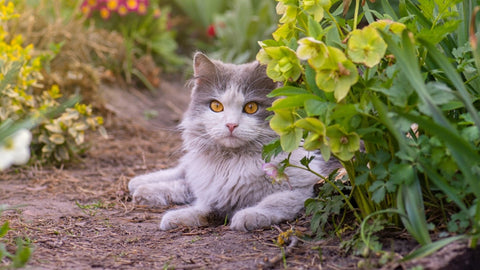
The Bottom Line
With a bit of know-how, you can create a garden oasis that's beautiful and also safe for your pets. By following the tips and suggestions outlined in this blog, you'll be well on your way to enjoying countless hours of outdoor bliss with your pets by your side.
So, go ahead and watch as your garden grows into a sanctuary where plants and pets can thrive. Happy gardening!

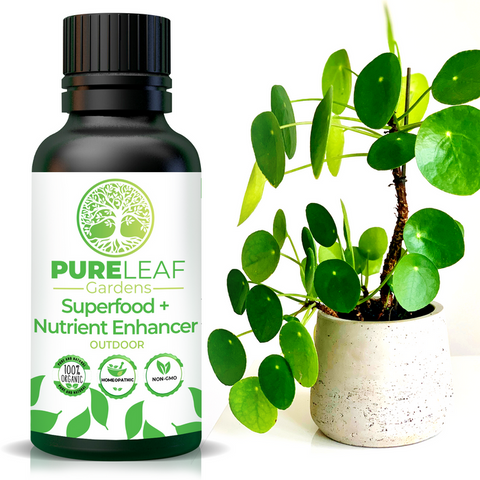
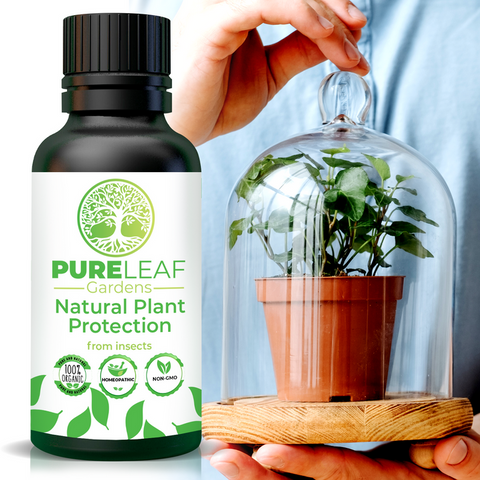
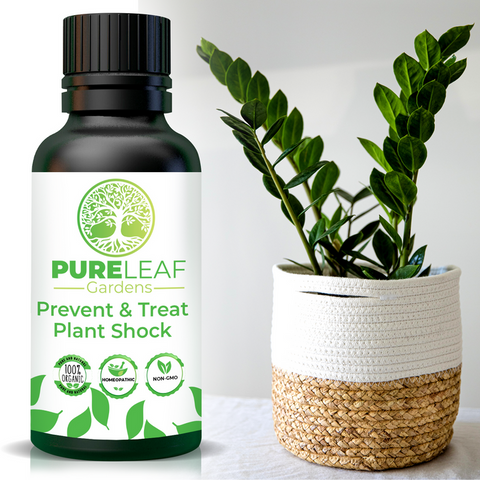
Leave a comment